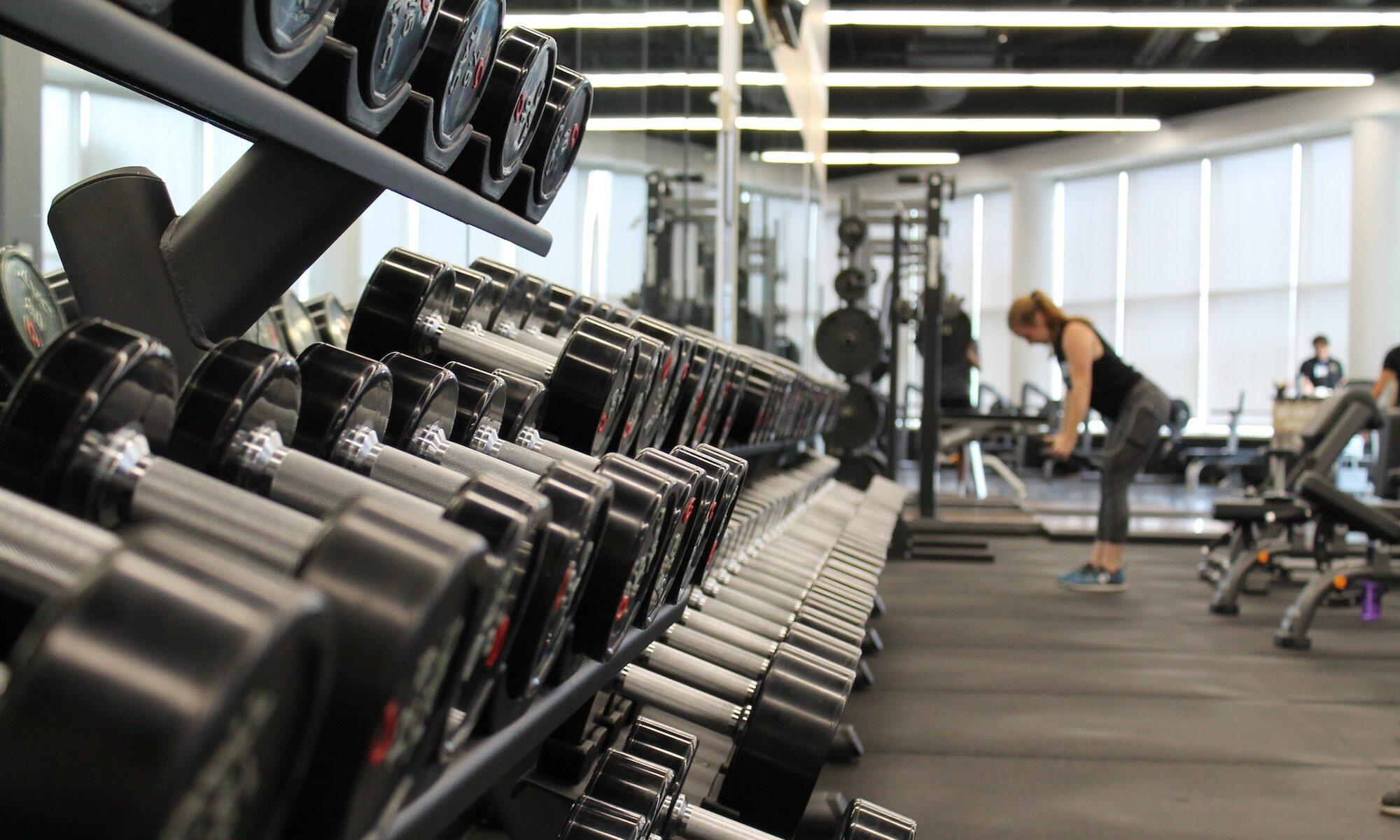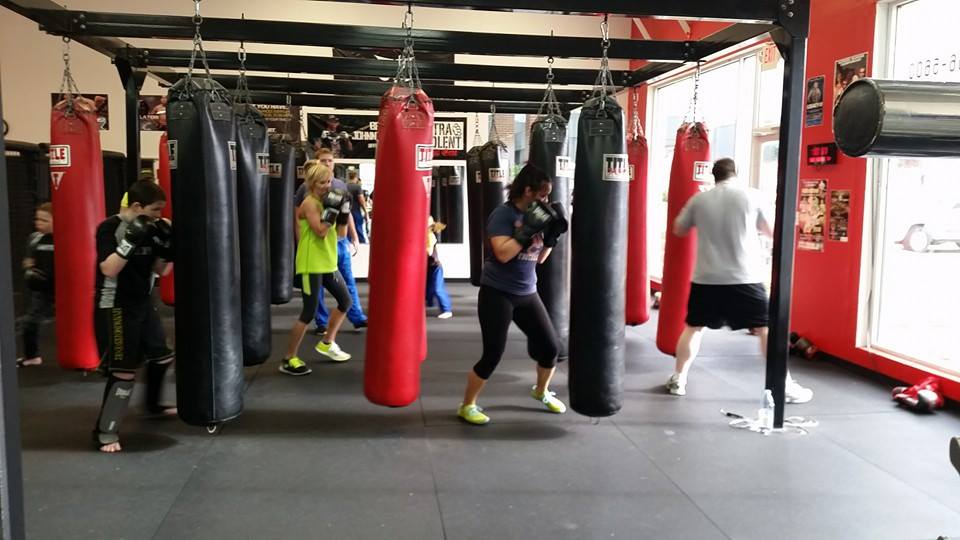Discover the best kickboxing classes near you that cater to all skill levels. Get in shape, learn self-defense techniques, and unleash your inner warrior with high-energy workouts and fun martial arts skills. Lace up your gloves and kick your fitness routine up a notch!
Are you in search of the best kickboxing classes near you? Look no further! This article will guide you towards finding the perfect kickboxing classes to meet your fitness goals and unleash your inner warrior. Whether you’re a seasoned fighter or a beginner, there are options available for all skill levels. From high-energy cardio workouts to self-defense techniques, these classes offer a fun and effective way to get in shape while learning valuable martial arts skills. So lace up your gloves and get ready to kick your fitness routine up a notch with the best kickboxing classes near you.
1. Benefits of Kickboxing Classes
1.1 Physical Fitness
Kickboxing classes offer a wide range of physical fitness benefits. Engaging in this high-intensity workout can help you improve your cardiovascular endurance, increase muscle strength and tone, and enhance overall flexibility. Kickboxing involves various movements that target multiple muscle groups, making it a full-body workout that can help you burn calories and achieve your fitness goals. Regular participation in kickboxing classes can lead to increased stamina, improved coordination, and enhanced overall physical fitness.
1.2 Stress Relief
In today’s fast-paced world, stress has become a common issue for many people. Kickboxing classes provide an excellent outlet for stress relief. The physical exertion and intensity of kickboxing can help release endorphins, which are natural mood boosters. The combination of punching, kicking, and various striking techniques allows you to channel any pent-up stress or frustrations into powerful and controlled movements. Through kickboxing, you can release tension, reduce anxiety, and alleviate stress, leaving you feeling refreshed and energized.
1.3 Confidence Booster
Kickboxing classes can significantly enhance your confidence levels. As you progress in your training, you will notice improvements in your strength, agility, and overall physical abilities. The mastery of various kickboxing techniques and combinations will give you a sense of accomplishment and empower you with a newfound confidence in your abilities. Additionally, the supportive and encouraging environment in kickboxing classes fosters a sense of community, providing a boost to your self-esteem. The confidence gained through kickboxing can positively impact all aspects of your life, both inside and outside the gym.

2. Different Types of Kickboxing Classes
2.1 Cardio Kickboxing
Cardio kickboxing focuses primarily on cardiovascular conditioning. This type of kickboxing class combines dynamic movements, such as punches, kicks, knee strikes, and footwork, with non-stop aerobic exercises. The primary goal of cardio kickboxing is to raise your heart rate, improve endurance, and burn calories. It is suitable for individuals of all fitness levels, making it a popular choice for those looking for a fun and effective workout without the need for prior martial arts experience.
2.2 Muay Thai Kickboxing
Muay Thai kickboxing, also known as the “Art of Eight Limbs,” is a traditional martial art from Thailand. This style of kickboxing incorporates the use of fists, elbows, knees, and shins, making it a highly versatile and effective form of self-defense. Muay Thai classes emphasize technique, timing, and strategy, teaching students how to execute strikes, clinch, and defend themselves using various techniques. Muay Thai kickboxing is not only physically demanding but also offers a unique cultural experience in learning the authentic techniques and principles of this ancient martial art.
2.3 MMA Kickboxing
MMA kickboxing, also referred to as mixed martial arts kickboxing, combines elements of kickboxing with other martial arts disciplines, such as Brazilian Jiu-Jitsu, wrestling, and judo. In this type of kickboxing class, students learn a wide range of striking techniques, including punches, kicks, knees, and elbows, as well as grappling and ground fighting. MMA kickboxing classes provide a comprehensive training experience for those interested in competing in mixed martial arts or seeking a well-rounded martial arts education. It offers a challenging and dynamic workout while promoting self-defense skills and overall martial arts proficiency.
3. What to Expect in a Kickboxing Class
3.1 Warm-Up Exercises
Kickboxing classes typically begin with a warm-up session to prepare your body for the intense workout ahead. Warm-up exercises may include jogging or jumping rope to raise your heart rate, dynamic stretching to loosen up your muscles, and mobility exercises to improve joint flexibility. The warm-up phase is crucial in preventing injuries and ensuring that your body is ready for the physical demands of the training session.
3.2 Technique and Skill Training
After the warm-up, kickboxing classes focus on technique and skill training. Instructors will guide you through basic stances, punches, kicks, and defensive movements, ensuring you understand the proper form and execution of each technique. This phase is essential for building a solid foundation and developing proper technique, which will be further refined as you progress in your training.
3.3 Bag and Pad Work
Kickboxing classes often incorporate bag and pad work to provide students with an opportunity to practice their striking techniques on targets. You will have the chance to punch and kick heavy bags or focus pads held by a partner or instructor. This aspect of training allows you to work on your accuracy, power, and speed while simulating real-world combat scenarios. It also provides an excellent cardiovascular workout and helps build muscular endurance.
3.4 Conditioning Exercises
Kickboxing classes typically include conditioning exercises to improve overall fitness and physical endurance. These exercises may involve bodyweight movements, such as push-ups, squats, lunges, and burpees, as well as functional training exercises, such as kettlebell swings or medicine ball slams. Conditioning exercises help develop strength, agility, and power, ensuring you are capable of executing explosive movements during training or in a real-life self-defense situation.
3.5 Cool-Down and Stretching
To conclude the kickboxing class, there will be a cool-down period, where you gradually decrease the intensity of the workout. This phase aims to lower your heart rate and allow your body to recover. Cool-down exercises may include static stretching to improve flexibility, as well as light aerobic movements to promote blood flow and reduce muscle soreness. Cooling down properly helps prevent post-workout injuries and fosters a quicker recovery for your next training session.
4. Finding the Best Kickboxing Classes Near Me
4.1 Local Gyms and Martial Arts Studios
When searching for kickboxing classes near you, start by checking out local gyms and martial arts studios. Many fitness centers offer kickboxing as part of their group fitness programs, while martial arts studios specialize in various forms of martial arts, including kickboxing. Inquire about their class schedules, instructor qualifications, and facilities to ensure they meet your preferences and requirements.
4.2 Online Directories and Reviews
Online directories and reviews can be valuable resources for finding the best kickboxing classes near you. Websites and apps dedicated to fitness and martial arts often provide comprehensive listings of local kickboxing classes, along with reviews and ratings from members and participants. Reading reviews can give you insights into the quality of instruction, class atmosphere, and overall satisfaction of previous and current students, helping you make an informed decision.
4.3 Recommendations from Friends and Family
Reach out to friends, family, or colleagues who have previously attended kickboxing classes. They can provide personal recommendations based on their experiences and offer insights into specific instructors, gyms, or studios. Recommendations from trusted individuals can be highly valuable in your search for the best kickboxing classes near you, as they provide firsthand accounts and honest feedback.
5. Factors to Consider When Choosing a Kickboxing Class
5.1 Location
Consider the location of the kickboxing class when making your decision. Choose a class that is conveniently located, whether that means close to your home, workplace, or any other location you frequently visit. Proximity plays a crucial role in maintaining consistency and attending classes regularly, as it eliminates travel barriers and saves you time and effort.
5.2 Class Schedule
Evaluate the class schedule to determine if it aligns with your availability. Look for kickboxing classes that offer sessions at times when you are free, ensuring you can commit to attending consistently. Having a class schedule that fits your daily routine will make it easier to establish a regular training routine and get the most out of your kickboxing experience.
5.3 Instructor Qualifications
Instructor qualifications and experience are essential factors to consider when choosing a kickboxing class. Look for classes taught by certified instructors who have relevant experience and knowledge in kickboxing or martial arts. Qualified instructors will not only ensure your safety during training but also guide you effectively to reach your goals and develop proper technique.
5.4 Facilities and Equipment
Examine the facilities and equipment available in the kickboxing class. Ensure that the training space is well-maintained, clean, and equipped with necessary safety measures. Check if the gym or studio has sufficient punching bags, focus pads, and other training equipment to accommodate all participants, ensuring everyone has an optimal training experience.
5.5 Class Atmosphere
Evaluate the class atmosphere to ensure it aligns with your preferences and goals. Some individuals thrive in a competitive and intense environment, while others prefer a more supportive and inclusive atmosphere. Take the opportunity to observe a class or speak with current students to get a sense of the energy and dynamics within the class. The right class atmosphere can significantly enhance your enjoyment and motivation during training.
6. Questions to Ask When Evaluating Kickboxing Classes
6.1 What is the Class Size?
Knowing the class size is important as it determines the level of individual attention and guidance you can expect from the instructor. Smaller class sizes often allow for more personalized instruction, while larger classes may provide a more energetic and team-oriented atmosphere. Consider your preference and learning style to determine the ideal class size for you.
6.2 Is there a Trial or Introductory Class?
Ask if the kickboxing class offers a trial or introductory class. This allows you to experience a sample session before committing to a membership or long-term training. A trial class can help you assess if the teaching style, class structure, and overall vibe of the class align with your expectations and goals.
6.3 What is the Cost and Payment Options?
Inquire about the cost of the kickboxing class membership or sessions, as well as any additional fees or requirements. Understanding the financial commitment associated with the class is crucial for budgeting and determining the long-term feasibility of attending. Additionally, ask about the available payment options and whether there are any discounts or promotions available.
6.4 Are there Beginner-friendly Classes?
If you are new to kickboxing, it is important to know if the kickboxing class offers beginner-friendly sessions. Beginner-friendly classes typically provide a slower pace, extra instruction, and additional attention for individuals who are still learning the fundamental techniques. Starting with a beginner-friendly class can help you build confidence and progress at a comfortable pace.
6.5 How Experienced are the Instructors?
It is essential to inquire about the experience level of the instructors. Experienced instructors bring a wealth of knowledge, proper technique, and expertise to their teaching. Ask about their background in kickboxing or martial arts, any certifications or achievements they hold, and if they have experience working with individuals at your skill level. Experienced instructors can provide valuable guidance and ensure your training is safe and effective.
7. Tips for Getting Started in Kickboxing
7.1 Purchase the Right Gear
Investing in the appropriate gear is essential when getting started in kickboxing. Essential gear includes hand wraps, gloves, and mouthguards to protect your hands and teeth during training. Consult with your instructor or a knowledgeable professional to ensure you purchase gear that is the right size, fit, and quality for your training needs.
7.2 Warm-Up Properly
Always warm up properly before starting your kickboxing training. Perform dynamic stretching exercises to loosen up your muscles and increase blood flow to the working muscles. Warming up prepares your body for the physical demands of kickboxing, reduces the risk of injury, and enhances overall performance during the class.
7.3 Listen to Your Body
Pay attention to your body’s signals and limitations during kickboxing. While challenging yourself is important for progress, it is equally important to listen to any discomfort, pain, or exhaustion. Pushing beyond your limits can lead to injuries and setbacks. Take breaks when needed and communicate with your instructor about any concerns or limitations you may have.
7.4 Stay Consistent
Consistency is key to making progress in kickboxing. Make an effort to attend classes regularly and establish a consistent training routine. This will help you build endurance, refine your technique, and achieve your goals more effectively. Even on days when you may not feel motivated, remind yourself of the benefits of kickboxing and the sense of accomplishment you will feel after each training session.
7.5 Have Fun and Enjoy the Process
Remember to have fun and enjoy the process of learning kickboxing. Embrace the challenge, celebrate your improvements, and appreciate the camaraderie and support from your fellow classmates. Kickboxing is not only a physical workout but also a mental and emotional journey. Embracing the journey and enjoying the process will make your kickboxing experience more rewarding and fulfilling.
8. Common Mistakes to Avoid in Kickboxing
8.1 Overexerting Yourself
Avoid overexerting yourself, especially if you are new to kickboxing or have not engaged in intense physical activity before. Pushing your body too hard without allowing for proper rest and recovery can lead to burnout and injuries. Gradually increase the intensity and duration of your workouts to avoid overexertion.
8.2 Neglecting Proper Technique
One of the most common mistakes people make in kickboxing is neglecting proper technique. It is crucial to focus on mastering the fundamental techniques before attempting advanced moves. Neglecting proper technique not only increases the risk of injury but also hinders your progress and ability to execute powerful and efficient strikes. Take the time to learn and practice correct techniques to maximize your results.
8.3 Skipping Warm-Up and Cool-Down
Skipping the warm-up and cool-down sessions is a common mistake that can have negative consequences. Warm-ups prepare your body for physical activity, while cool-downs aid in recovery and reduce muscle soreness. Always make time for these important phases of your workout to optimize your performance and minimize the risk of injuries.
8.4 Pushing Through Injuries
Ignoring or pushing through injuries is a major mistake in kickboxing. It is essential to listen to your body and seek proper medical attention when necessary. Continuing to train with an injury can worsen the condition and prolong your recovery time. Consult with a healthcare professional and follow their advice before returning to kickboxing after an injury.
8.5 Comparing Yourself to Others
Avoid comparing yourself to others in your kickboxing class. Every individual progresses at their own pace and has their unique strengths and weaknesses. Focus on your own progress and journey instead of feeling discouraged or disheartened by comparing yourself to others. Celebrate your achievements, big or small, and measure your success based on personal growth and improvement.
9. Frequently Asked Questions about Kickboxing Classes
9.1 How many classes per week should I attend?
The frequency of attending kickboxing classes varies depending on your fitness level, goals, and schedule. For beginners, starting with two to three classes per week is generally recommended to allow for proper recovery and adaptation. As you become more comfortable and develop better endurance, you can gradually increase your participation to four or five classes per week if desired.
9.2 Can I do kickboxing if I have no prior experience?
Absolutely! Kickboxing classes are designed to accommodate individuals of all fitness levels and experience. Beginner-friendly classes are often available, providing extra instruction and guidance for those who are new to kickboxing. Don’t let the lack of experience hold you back from trying something new and exciting.
9.3 What should I wear to a kickboxing class?
Appropriate attire for kickboxing classes typically includes comfortable workout clothes, such as shorts or leggings, and a fitted t-shirt or tank top. Avoid wearing loose or baggy clothing that may hinder your movements or get caught in equipment. As for footwear, athletic shoes with good support and traction are recommended.
9.4 How long does it take to see results from kickboxing?
The timeframe to see noticeable results from kickboxing varies from person to person, depending on factors such as consistency, effort level, and individual genetics. With regular participation in kickboxing classes and a balanced approach to nutrition, you can typically expect to see improvements in cardiovascular fitness, strength, and body composition within a few weeks to a few months.
9.5 Is kickboxing suitable for all ages?
Kickboxing can be suitable for individuals of various ages, but it is essential to find classes or programs that cater to specific age groups. Many gyms and studios offer kickboxing classes designed specifically for children, teenagers, and adults. Consult with the instructors or facility staff to determine the most appropriate age group and class for you or your child.
10. Final Thoughts on Kickboxing Classes
10.1 Empower Yourself with Martial Arts
Kickboxing classes offer a unique opportunity to empower yourself with the knowledge and skills of martial arts. Beyond the physical benefits, martial arts training cultivates mental toughness, discipline, and self-confidence. The journey of learning kickboxing can leave a lasting impact on your overall well-being and personal growth.
10.2 Find the Perfect Kickboxing Class Near You
By following the steps and considerations outlined in this article, you can find the perfect kickboxing class near you. Take the time to research and evaluate various options, and don’t hesitate to try out different classes to find the one that aligns with your goals, preferences, and schedule.
10.3 Embrace the Physical and Mental Benefits
Kickboxing classes provide a multitude of physical and mental benefits. From improving physical fitness and relieving stress to boosting confidence and self-esteem, kickboxing offers a holistic approach to well-being. Embrace the journey, stay consistent, and enjoy the many benefits that kickboxing has to offer.


